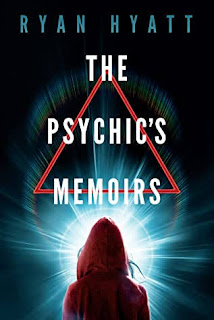New Book Alert: The Future of Finance After Covid: Technology and Trends Disrupting The Post-Pandemic Financial World; A Fascinating and Eye-Opening Look At Life and Money After Covid
By Julie Sara Porter
Bookworm Reviews
It's no secret that the Coronavirus Pandemic will change life as we know it in many ways, how we gather, how we treat illness, how students are educated, and many other ways. Another way will be how finances are transferred and how technology will be used in future competitive markets and to adapt to the population that it serves.
Jason Schenker, President of Prestige Economics and Chairman of the Futurist Institute, presents a fascinating and eye opening hypothesis in his book, The Future of Finance After Covid: Technology and Trends Disrupting The Post-Pandemic Financial World.
As with most books that predict the future, Schenker's view is not necessarily 100%. It's based on the current research and statistics to deliver a probable future based on current trajectory. Unforeseen circumstances happen and things change,but it is an approximate look on how things could be.
"The future of of finance will be exciting and disruptive," Schenker said. "The most interesting part of of the changes coming in the decad ahead have already started….the future of finance after the COVID-19 pandemic is going to be about market adoption, penetrating of emerging technologies, and complete saturation of certain critical technologies."
Schenker divides his book into four main sections: Market
Trends, trends before and during the Pandemic, Technology Trends, the strongest technologies that will see increased appeal during and after the pandemic and subsequent recession, Long-term Risks, including modern theories and the issues that could arise in adapting principles like universal basic income to help stabilize the economy, and Global Trends, how the economy could benefit from various technologies and evaluating the roles of the U.S. and China in a potential second Cold War.
Schenker wrote how financial technology, called FinTech, is predicted to change in three major levels: reducing costs, improving user experience, and provide access which can't be reached by traditional means. Many of the trends that he writes about include block chain, quantum computing, cryptocurrency, and Big Data. The advantages and disadvantages to these trends are explored as well as their effectiveness in financial transactions.
Among the big issues that are referred to in the book is cyber security. For example using blockchain and quantum computing to increase security of encryption and transparent records could increase company's attack surface making them more vulnerable against hackers and cybercriminals. Because of the rivalries between China and U.S. over these issues could lead to technological warfare between the two vying over their use of quauntum computing.
Schenker's book also discusses the concerns about the future such as AI over reliance. Schenker reminds his Readers of the important project management and creating limitations on the AI's for what they can and cannot do. Central banks may become a thing of the past as financial transactions will be mostly online.
Uncertainty towards the future is also a huge concern, such as increased debt and that many are uncertain about how much debt that will take to get out of the recession. Another concern is the possibility of giving a universal basic income. Schenker dismisses this proposition by saying that countries cannot afford it and that it will increase inflation and taxes.
There are also positive impacts such as mobile payments offering more inclusion particularly previously unbanked households. Another positive impact is that companies are decreasing their carbon footprints and increasing their sustainability with people traveling lessnd using less resources.
The Future of Finance After Covid is an interesting outlook of the future, both the good and the bad.




